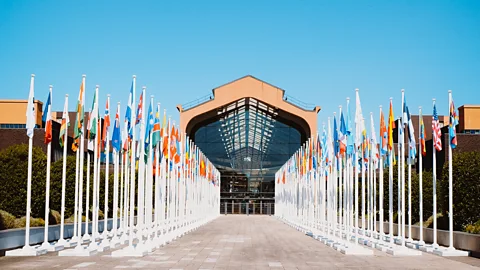 Paris 2024/ Raphael Vriet
Paris 2024/ Raphael VrietSince 1924, cities hosting the Olympics have created vast areas of purpose-built dwellings to house the athletes. These have increasingly been seen as a vehicle for urban regeneration – but do they really end up serving local communities?
Pierre de Coubertin, co-founder of the International Olympic Committee (IOC) in 1894, had the idea for the first Olympic village for the 1924 Summer Games in Paris. For the first time, purpose-built dwellings would provide the athletes with accommodation, bedding and food. Previously, athletes had lodged in hotels, hostels, schools, barracks, even the boats in which they’d travelled to the host cities.
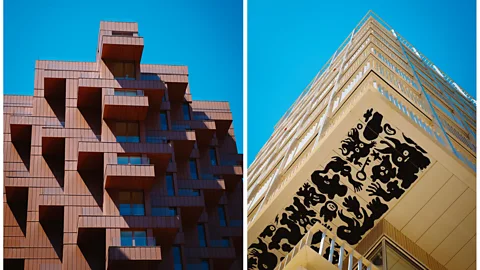 Paris 2024/ Raphael Vriet
Paris 2024/ Raphael VrietDe Courbertin was pragmatic and public-spirited. He reasoned that it was cheaper to house athletes in new, temporary structures than in hotels, while villages could instil a sense of communality among international contestants. A key development in the evolution of villages came when they started being designed also for use after the Games had finished – an idea pioneered by the Helsinki Olympics of 1952, which had two villages. Other host cities have since widely adopted this approach – or at least aimed to do so, especially in the past two decades. While the village of the 1924 Paris Olympics was transient – it was razed after the Games – the villages at the current Paris Games are designed to be inhabited long after they’ve wrapped up.
Compared with the sporting venues, the villages have also become increasingly private spaces during the period the Games are on, relatively divorced from the public sphere. This follows the terrorist attack at the 1972 Olympics in Munich, West Germany, which saw members of Palestinian militant organisation Black September invade the village and kill Israeli athletes and coaches as well as a West German police officer. Aside from athletes and their entourage, few visitors can enter villages, and only following stringent security checks.
Over the decades, villages have reflected host cities’ political ideology, social values and taste in architecture. Their quality is also affected by a country’s economic fortunes. In the past 20 years or so, host cities have increasingly addressed more universal concerns – sustainability, urban regeneration and legacy, the latter meaning long-term benefits enjoyed by a host city’s inhabitants after the Games have finished. These new villages and others Games’ buildings and services are widely welcomed for revitalising deprived areas, for example by providing social housing, new employment opportunities and improvements in infrastructure and transport links. But in practice such plans often don’t live up to their promise, and have attracted controversy.
The Paris 2024 situation
The three villages for the current Paris Games are a case in point. They are spread across the northern suburbs of Saint-Denis, Saint Ouen and L’Île-Saint-Denis, all part of the Saint-Seine-Denis department, and will house 4,250 athletes during the Olympics, and 8,000 athletes during the Paralympics. While much effort has gone into making them sustainable – through the repurposing of run-down former industrial buildings as amenities and accommodation for the athletes – such urban regeneration has involved forcing out many existing, established residents, such as immigrants, who have had to find temporary homes or squat in abandoned warehouses or offices, many in squalid conditions. And this is getting attention globally, with The New York Times this week highlighting what has been happening in Seine-Saint-Denis, and human rights activists more generally accusing French authorities of “social cleansing”.
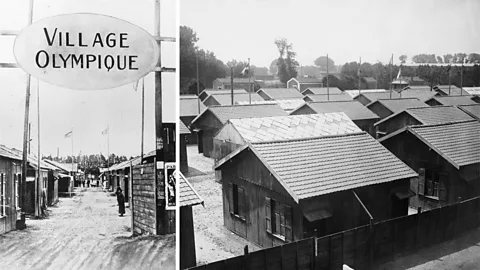 Getty Images
Getty Images“One of the benefits of well-planned Olympics is their ability to rapidly regenerate an area,” says Dan Epstein, consultant director of Useful Projects, a sustainability and innovation consultancy with experience in urban development and global events, who was head of legacy and sustainability for the Olympic Delivery Authority during the London 2012 Olympics.
“But with regeneration comes gentrification and this can lead to the forceful eviction of the most vulnerable people from the area. Policies such as provision of social housing and work for local people are vital, and should be properly integrated into the planning, design and economic model of development of Olympic villages. London moved 600 people and hundreds of businesses out [to make way for] its Olympic Park. But it had partnerships with the Greater London Authority, and policies and finance were put in place to rehouse people and relocate businesses. Inevitably some communities and individuals lost out but a real effort was made to protect people. When planning the 2012 London Olympics we were very conscious that this was a major risk other Olympics had fallen foul of.”
However even in London’s case, the benefit of the Games’s regeneration plan to local residents is contested. The Olympic village, re-named East Village, has been turned into apartments, but these have been widely criticised for their high rents. In 2022, a two-bedroom flat in the former athletes’ blocks cost upwards of £2,300 a month, and three-bedroom flats £2,700 a month. And while the London organising committee promised that 30,000 to 40,000 new homes would be built on the Olympic Park, The Guardian reported, also in 2022, that just 13,000 homes had been built on and around the site. Meanwhile in Newham, Tower Hamlets, Hackney and Waltham Forest, the four London boroughs that the Park straddled, there were reportedly almost 75,000 households on the waiting list for council housing.
That said, some local residents benefitted from the new housing provided, given the scarcity of homes on the original site, says Dave Hill, author of the book, Olympic Park: When Britain Built Something Big, and founder of onlondon.co.uk, which features news and analysis about London’s politics and culture. “Prior to the Games there was only one housing estate on what became the park land. Much of it was student accommodation, and the rest was poorly and badly run – it was almost certainly for the chop,” Hill tells the BBC. “I can’t tell you where all those residents ended up… [but] East Village has a high percentage of new social and other affordable housing, which didn’t exist before the Games. I’d be surprised if lots of it wasn’t allocated to people on the waiting lists of Newham and other councils.”
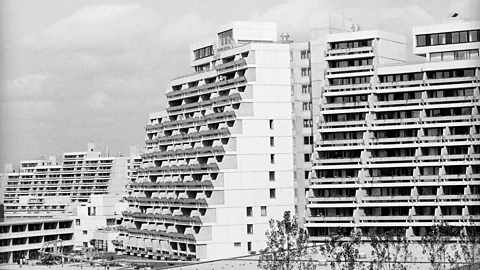 Getty Images
Getty ImagesSimilarly, the overall effect on local businesses is not black-and-white, he believes. “The LDA promised to find new premises for all businesses displaced from the park development site. Inevitably, there were long-running disputes about the process, compensation levels, alternative locations and so on, as there always are with compulsory purchase orders (and there were a massive number of these). I don’t know what happened to all the businesses – I doubt anyone does. Some businesses might have been damaged by relocating, some might have benefitted. Some might have taken compensation and retired happily. Some that went out of business might have done so anyway. It’s always a mixed picture, and you only ever hear from the people who aren’t happy.”
In general, cities bidding to host the Games these days are expected to convince the IOC that their scheme is sustainable and their plans for urban regeneration well-founded. “Today, for host cities, providing evidence of sustainability credentials revolving around reducing embodied carbon [all the CO2 emitted in the production of the building] and operational carbon [carbon released by a building’s ongoing use of energy, such as electric lighting and heating] is now a given,” says Ashley Munday, principal and head of design at architecture firm Hassell, who was involved in the design of the 2012 London Olympic Village. “A key criterion is the legacy value of between 3,000 and 5,000 new homes [created by the villages] – a great way to boost social housing stock.”
The first Olympic Villages
The evolution of the villages over the past century is certainly an impressive thing. De Coubertin’s seminal 1924 Paris village was rudimentary: near the Games’ Stade Olympique, it comprised spartan wooden cabins, each containing three beds. Other amenities included a bureau de change, telephone service, dry cleaner, hairdresser, newsagent and post office.
The village of the 1932 Los Angeles Olympics stood in the Baldwin Hills, a 10-minute car drive from the Olympic Stadium. In these early days, the sexes were segregated: women athletes were housed in a hotel, male athletes in affordable temporary, lightweight structures, befitting the economically straitened times of the Great Depression. Even so, the village included dining halls, houses for bathing, a hospital, fire station, telephone network and a 2,000-seater amphitheatre.
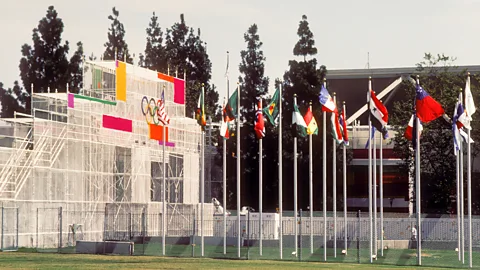 Alamy
AlamyIn the 1984 Los Angeles OIympics, both sexes were housed together in its villages for the first time. Although 14 Eastern Bloc countries boycotted the Games – in response to the US-led boycott of the 1980 Moscow Olympics and its protest against the Soviet invasion of Afghanistan – the villages’ style was celebratory. Architect Jon Jerde designed joyously polychrome towers in pop shades that reflected the 80s vogue for playful post-modernism and high-tech architecture.
The 1936 Summer Olympics in Berlin, seized on by Hitler as a powerful propaganda tool, were the first to be televised. Its village included two-storey dormitories, a dining hall, gym and training facilities. It was opened to the public, attracting 370,000 visitors, a reflection of nationalist sentiments. After the Games closed, the village was repurposed as a hospital and army infantry school. The building that US athlete Jesse Owens stayed in has since been restored.
In 1948, a bomb-scarred London played host to the Olympics on a shoe-strong budget. Existing structures were reused at its village – a former military convalescent camp comprising wooden huts in Richmond Park. This housed male competitors, while female athletes mainly stayed in educational establishments, such as Southlands College, at the University of Roehampton in Wandsworth. The Finnish team brought with them a prefabricated wooden sauna, which also contained a bathroom, massage room and kitchen. It was gifted to Britain after the Games, and later moved to Cobdown Park in Maidstone where it was in use until 2020.
By contrast, the villages at the Helsinki Olympics were idyllic. They were conceived with the aim of helping to retain a vital green space in the northern part of the city that would otherwise have been swallowed up by an encroaching business district nearby. The villages stood on a sloping woodland setting with large outdoor spaces, and so established a close connection with nature. Helsinki later expanded, and the villages are now located in the city centre, though they retain their rural charm. Their buildings were designed in a modernist style by forward-thinking architects, including Alvar Aalto. “The villages in Helsinki have maintained their popularity,” says Kristo Vesikansa, editor-in-chief of Finnish Architectural Review. “For many Helsinki inhabitants, the villages represent an ideal residential neighbourhood with their compact, functional apartments and large gardens. A swimming pool, originally built for athletes, is also popular.”
 Getty Images
Getty ImagesThe village of the 1960 Rome Olympics was an early example of regeneration. The Games’ organisers revitalised a run-down neighbourhood called Parioli, building public housing in a modern style that comprised 1,348 modern apartments designed for use after the Games, and which still exist.
A key attraction of the 1972 Munich Olympics was its avant-garde, futuristic architecture, which chimed with the Games’ forward-looking philosophy. However the village is now, above all, remembered as the site of the horrific tragedy of the Munich massacre. Designed in 1969 by architect Günther Eckert, it comprised a concrete, high-rise block, housing 801 spacious apartments. The village’s streets were on a level separated from traffic – a presciently eco idea. The Munich Games were an early adopter of the legacy creed, with the village’s buildings designed to be reused post-Games. Its apartments were later sold as homes, while two-storey houses were converted into student accommodation (although this had to be rebuilt later as it was partially destroyed during a student riot). Today, says Munday, the village remains “sought-after because of the quality of its architecture and its green spaces”.
Urban regeneration was central to the 1992 Barcelona Olympics and its village. A residential area – La Vila Olímpica – was created in the Poble Nou district, formerly an industrial, polluted area. A number of architects – Josep Martorell, Oriol Bohigas, David Mackay and Albert Puigdomènech – designed the village to give it stylistic variety. Yet its layout was ordered – modelled on the famously elegant grid of Barcelona’s central Eixample neighbourhood. “Barcelona is possibly the best example we saw of a village converted into a successful urban quarter that also made improvements to the waterfront,” says Epstein.
The 2012 London Games entailed redeveloping a polluted, industrial spot in the Stratford area in the east of the city. “The London Olympics set itself the target to be the most sustainable Olympics ever,” says Epstein. “The idea was to use the Olympics to catalyse the regeneration of the Lower Lea Valley and transform it into a vibrant, low-carbon, socially inclusive community with exceptional public transport. Many Olympic parks and their facilities in the past have frequently been abandoned after the Games were over.”
 Getty Images
Getty Images“Ken Livingstone, as London’s first elected mayor, championed the London Olympics,” says Hill. “Livingstone could see the Games could bring enormous investment into the Lower Lea Valley.” The Games also had the full support of Livingstone’s successor as mayor, Boris Johnson, although his taste in architecture was Classical and conservative. “Johnson had a vision for the Olympic park as a whole for Victorian-style terraced, family-sized housing and squares, inspired by London’s grand Grosvenor and Bedford estates.”
So architects Fletcher Priest, working with structural engineers Arup and landscape architects West 8 and Vogt Landscape, were briefed to design a village-like district with gardens reminiscent of Victorian street layouts in such areas of West London as Maida Vale. This incorporated 69 residential blocks, communal squares, courtyards and water features.
The criticism of villages’ ‘legacy’
The debates about London and now Paris aside, other host cities have also come in for sharp criticism on the legacy front. “The village at the 2004 Summer Olympics in Athens comprised 21 residential towers,” says Epstein. “After the Games, it was intended to become a new residential zone, its accommodation sold or rented to the local population. However, only half the apartments are now occupied. And when Rio hosted the Games in 2016, it wanted to emulate London. But its villages and 31 towers failed to create successful legacies, at least in the short term. The plan was for the towers to be transformed into luxury condos but they’re largely vacant.”
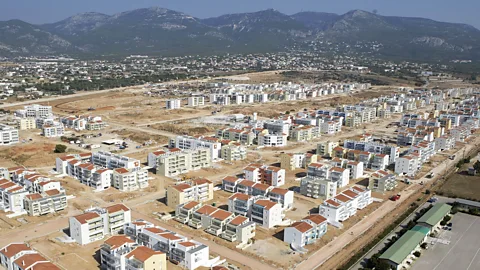 Getty Images
Getty ImagesWhile many are angered by the evictions from Seine-Saint-Denis and other areas of the city in the run-up to this year’s Paris Games, its organisers are demonstrating a strong commitment to sustainability, with much evidence of future-proofing of buildings in the villages in readiness for their change of use post-Games. For example, three apartment blocks in St Ouen created for athletes will be reused as housing and offices after the Olympics. Many existing buildings, such as a factory and film studio, have been repurposed. Rooftops are fitted with solar panels, and wide gaps between buildings allow wind tunnels to draw fresh air into the villages from the River Seine. “The Paris Games have lots of promise,” says Epstein. “They have a real focus on reuse of existing facilities.” But, he adds, sounding a note of caution, “You can only really tell what a host city’s legacy is, how sustainable it turns out to be in the long run, 10 to 20 years after the Games have been and gone.”
Want to read more about the Olympics? Sign up for Medal Moments, your free global guide to Paris 2024, delivered daily to your inbox throughout the Games.









Recent Comments